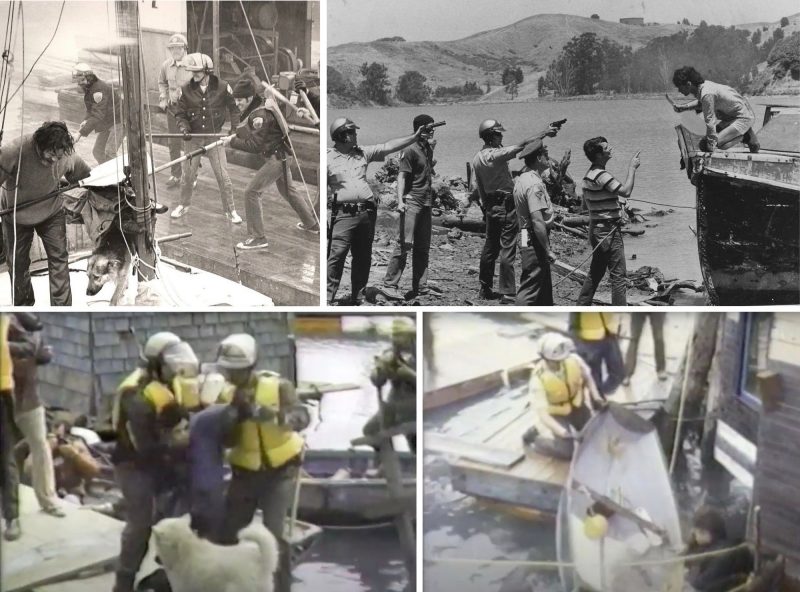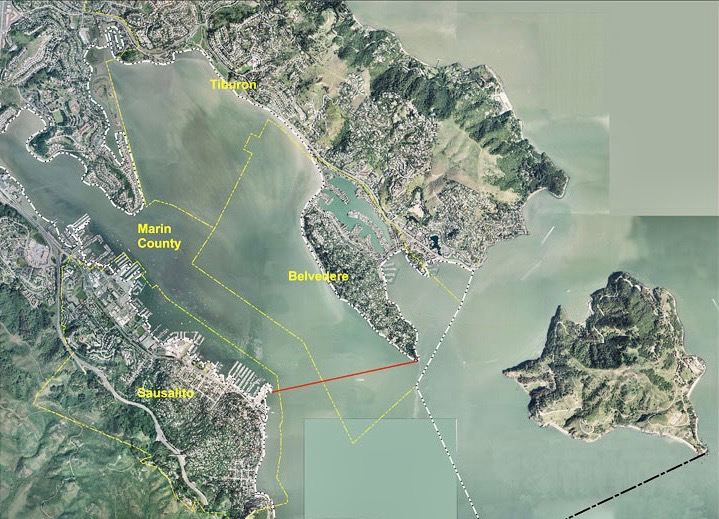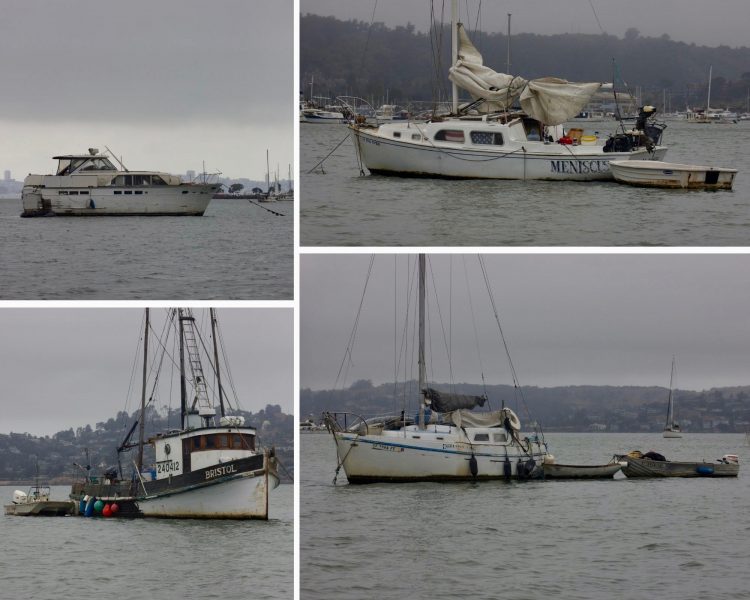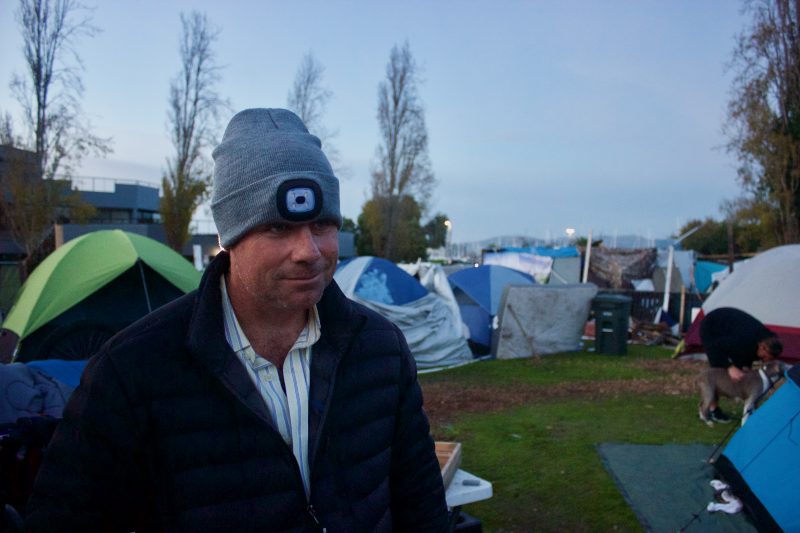
The End of the Anchor-Out Era on Richardson Bay
When we started reporting on the latest developments on Richardson Bay in August 2021, we were compelled to compare the Bay Area’s protracted conflict over anchor-outs to the then-ending war in Afghanistan: A decades-long intervention into a historically ungovernable region was coming to a conclusion, and in some ways, we seemed to end exactly where we’d started. This is certainly not what authorities tasked with clearing out Richardson Bay had envisioned. They told us that they’d sought to be compassionate, humane and fair, to help long-time liveaboards maintain their dignity, and to specifically prevent the indiscriminate clearing out of people and boats that characterized Sausalito’s Houseboat Wars in the 1970s and ’80s.
While there seem to be some similarities between Richardson Bay’s recent past and the present conflict, there have also been major changes. Plans are now on the books to remove all long-term anchor-outs by 2026, and there has been a sharp reduction in the number of boats on the water, following a glut in the mid-2010s that likely sparked an eventual crackdown. There are also plans for a 15- to 20-boat mooring field where transitioning anchor-outs will be placed, though even this proposal has become contentious among local governments.
As regulations have tightened, several lawsuits have pushed back against authorities. A homeless encampment — which has become a focal point of controversy — has taken root in Sausalito in the shadow of the facility where boats are crushed. Ramped-up enforcement on anchor-outs has, in some cases, led to confrontations, and former boat owners from Richardson Bay to the Oakland Estuary have sued over the confiscation and destruction of their vessels. Despite years of exhaustive debate, some people still question who, if anyone, has jurisdiction in the murky nexus of maritime borders that anchor-outs occupy. Long-term anchoring was never legal, but was tolerated for more than 30 years, and there was some kind of acceptance of full-time liveaboards, though tensions festered. When the long-standing 72-hour anchoring limit was finally enforced in full around 2018, it created an atmosphere where people declared, “You have no right to tell me to leave,” and the battle began anew.
Journalists have been drawn to the fray, and Sausalito’s anchor-out debate has appeared in both local and international media. “Sausalito’s housing war is happening on the water … [and] in this ongoing war, any tactics were worth trying,” the San Francisco Chronicle wrote about physical confrontations over confiscated boats. As in the past, some people frame the anchor-out debate as a struggle between rich and poor, between wealth hoarders and have-nots, between those who live for “free” and those in neighboring multi-million-dollar homes. Others shun these characterizations, saying it’s simply a matter of following long-standing, common-sense laws, similar to the ethos of protecting parks and public spaces. (Anchor-outs have been a concern throughout the nation, especially in Florida, but “long-term, derelict anchor-outs get wiped off the map through an act of God,” a sailor told us, referring to the frequency of hurricanes.)
“To make our position clear: We think there’s room on Richardson Bay for everyone — if everyone were willing to compromise,” wrote Latitude 38 founder Richard Spindler in 2001. While the ideas of compromise and space for all now seem naive, Latitude remains hopeful that there can be peace, even though the same intractable, warring dynamic that has long framed the anchor-out debate seems to remain — at least for now.

In 2019, the California State Auditor said that the Bay Conservation and Development Commission had neglected its responsibility to protect San Francisco Bay, and cited vessels anchored on Richardson Bay as a specific example. Despite vigorous protests from the annals of Latitude (and from Latitude itself), the BCDC has set policy on anchor-outs since the 1980s. “Our perception is that many boat owners look to the BCDC in the same way Afghanis look to the occupying Soviets: an unwanted outside agency coming in under false pretenses and telling them how to live,” Spindler wrote in 1985.
Following the audit, the BCDC threatened to sue the Richardson Bay Regional Agency for not enforcing its own 72-hour anchoring limit, and in late summer 2021, the two agencies reached an agreement, which began by reiterating a policy established in 1984: “Vessels and floating structures used for residential purposes (i.e., houseboats and liveaboards) should be allowed only in recreational or houseboat marina berths.
“All anchor-outs should be removed from Richardson Bay.”
Former Sausalito mayor Jill Hoffman told us that the city was “well ahead” of the State Auditor and BCDC’s focus on anchor-outs. Since 2016, the city — which withdrew from the RBRA in 2017 — went from 90 anchored vessels to just six. The RBRA said that the number of boats in their waters went from just under 100 in the 1970s to over 240 boats by 2016. There were 133 boats in October 2020; in October 2021, the RBRA told us that there were 82 boats, of which 10 were operable.

There is a tendency to lump anchor-outs, and some abstract idea of the their vessels, into the same category. Some describe all anchor-outs as mariners and bohemians, others describe all anchor-outs as homeless. There’s no question that the Bay Area’s housing crisis, and the national rise in homelessness, were the match that ignited the Richardson Bay powder barrel. Affordable housing and other social-policy issues are well outside the scope of this magazine — these issues are even outside the scope of the agencies directly tasked to deal with anchor-outs, such as the RBRA and BCDC, as well as businesses and individuals who have become involved by default, such as marinas and harbormasters.
Robbie Powelson, the president of the Marin County Homeless Union, told us that because of Marin’s exclusivity and lack of new, affordable housing, “Many people started to get boats on the anchorage, and you had people on Richardson Bay who didn’t want to be there in the first place.” Curtis Havel, the now-former RBRA harbormaster who was responsible for stepping up enforcement, said that when he took the job nearly two years ago, “I wasn’t open to the idea of acknowledging that somebody out on the water might be homeless. As time went on, I came to realize the ugly secret: that Richardson Bay is Marin County’s largest homeless encampment.” Steve McGrath, the interim executive director of the RBRA, echoed a similar sentiment: “It would be helpful to think of the anchor-out community as a water-based encampment. It’s not tents, but boats that are mostly not in good repair.” According to the 2015 Marin County census, 14% of the county’s homeless population was living on boats.
“I think that the community has always been the same,” said former RBRA harbormaster Bill Price, when we asked him if he had noticed a rise in homeless anchor-outs during his 24-year tenure. “I don’t think there have ever been more or [fewer] mariners. Some people can survive pretty well out there — you have to. It takes a certain kind of person.”
Brian Doris, a current Richardson Bay anchor-out of five years, told us that he estimated that out of the total Marin anchor-out population, about 35% are mariners. “The majority out here are campers and people who think that this is a campsite. These are the people I have to save over and over.” Doris said that he’s never been served notice or asked to leave, and that former-harbormaster Havel would often ask him for help during storms, as boats broke anchor.
Alaric Moore, a former Richardson Bay anchor-out of two years, said she and her friends “once counted 32 ‘meth heads’ on the anchorage. But Moore, with whom we spoke in 2018, was careful to contextualize the situation. “During the Gold Rush in the mid-1800s, after all of the gold had been got, there was a housing crisis and income disparity in the Bay, and people resorted to living on the water.
“Sound familiar? There are serious issues on Richardson Bay, but nothing is new.”

The agreement between the RBRA and BCDC says that the RBRA must establish a mooring field, the location of which has yet to be determined, by December this year. “This binding agreement puts some legal structure around illegal anchor-outs,” Steve McGrath told us. Current anchor-outs enrolled in the RBRA’s “safe and seaworthy” requirements would be moved to this field, and would be allowed to reside there through October 2026; it’s not clear if the mooring field will be available for transient boats after that time. “No discussion has occurred or decision made regarding whether or not to seek permits for moorings beyond 2026,” McGrath told us.
A 100-boat mooring field for Richardson Bay was proposed in 2013, and has long been promoted by Latitude 38 — we’ve often looked to San Diego as a successful model. Former harbormaster Bill Price told us that the idea a decade ago offered compromises among stakeholders, and would have held anchor-outs to a higher standard. Price said that the BCDC had “some interest” in the proposal at the time, but that it was never well received by Sausalito.
“I was pretty vocal about opposing the mooring field in the BCDC/RBRA agreement,” Jill Hoffman told us last year, adding that the recent proposal for the field was reached with no input or collaboration from the City of Sausalito, and that its first proposed location was “in rough waters” at the north end of the city.
“And at the end of the five-year period what do you do?” Hoffman asked, referring to the October 26 deadline. “I haven’t seen a plan from the county to rehouse these people, and that was the genesis of this homeless encampment.” Hoffman wrote an op-ed in the Marin Independent Journal in August 2021 saying, “The last time RBRA inserted ‘temporary’ moorings, they overstayed their permits by 16 years and were rented for residential and storage use.” Hoffman wrote that Sausalito’s tent encampment sprang up in late 2020 “when a vessel was destroyed and the person who was living aboard had nowhere else to go.” Several people told us they reject this narrative, and that the original camp was not comprised of anchor-outs.

The homeless encampment in Sausalito, adjacent to the Army Corps of Engineers Bay Model Center, has around 40 to 50 residents, according to estimates. (The city-sanctioned camp was originally in Dunphy Park, near Galilee Harbor, but was relocated to Marinship Park.) Some residents told us that they believed there were up to 20 former anchor-outs in the camp. “They want us to wallow in this,” one camper told us. “And if they break us up, they win.” One person told us that they believed the camp was “concocted by activists” to make an argument for housing, and not necessarily reflective of people who had lived on boats.
Both Curtis Havel and the RBRA told us that no occupied boats were confiscated, and that no one became homeless as a result of removing boats from Richardson Bay. (We’ll have more on this in the next installment.)
For months, tensions have been high among city workers, the police and camp residents. Last year, a Sausalito city employee was accused of throwing a rock at a homeless woman in the camp. The city of Sausalito has been accused of “failing to protect and causing harm to” the residents of the encampment, according to the Pacific Sun. “A lawsuit filed in February has cost Sausalito approximately $500,000 so far,” the Sun reported. In December 2021, a photojournalist was arrested and his equipment confiscated after police accused him of interfering with a police investigation and injuring an officer.
When we visited the camp in November 2021, residents told us that raw sewage had contaminated the grass. The city told campers to move onto tennis courts by February 9; that same day, there was an explosion and fire near the camp, and Sausalito declared a state of emergency, according to the Marin IJ.
The language used by some anchor-outs makes us worried a peaceful resolution remains elusive. Brian Dorris, the anchor-out of five years, told The Guardian, “‘This is my home,’ he [said], adding if they want to take his boat, they should ‘bring a body bag.'” Another anchor-out told the LA Times that the only way he was leaving his home was “in handcuffs or a black plastic bag.”
Please click here for Part 2 of this series, and here for Part 3.
This story has been updated.

Law makers always think new laws are the answer. Equal enforcement is the answer. We are liveaboards. Our marina provides a free pump-out station(anybody can use it for free), a laundry, bathroom facilities with showers, and a place for us to park our cars. We also use a pump-out service that supplies the harbor with a record of when we use them to pump-out our black water. The USCG Auxiliary provides a free service where they inspect your boat for compliance to our local regulations. No penalty, just information. Respectfully, if you can not keep your boat in operable condition, and compliant to local regulations, you can not afford to live on a boat in San Francisco Bay. You are neither a bohemian, nor a mariner. You are a scofflaw, and an environmental pirate. Some might prefer a dinghy ride and a walk to the bus stop, or enjoy lugging fresh water in jugs and bathing in bay water. Beatnik, artist, poet, or welfare baby, nobody needs to be chased out of anywhere. We certainly do not need more meaningless regulations. Just enforce the existing laws.
Amen, Mark!
Great! There goes my retirement plan ;-(
I am proud to be raised as an “anchor out” because of the experiences I learned from the people I was raised around. So many of the “anchor outs” I was raised around were creative, funny, worked hard and always looked out for each other and were great people and still my great friends. Of course, a few were making bad decisions and creating trouble for others. No different than any place I have lived around Marin County including my current residence, Tiburon.
Positives in my mind to those being an “anchor out” that need some help to live happily and peacefully. It does require more responsibility than living in a tent city or under a freeway (like I see all over the SF Bay area now). If you make a bad decision, you fall over and drown. If you don’t look after how you are anchored; you may wash up on Tiburon shore and lose what you have. And as an anchor out, if you are struggling with mental issues, I am guessing having a little more space between your neighbor to deal with your issues can help you live peacefully and possibly help to keep you from making more bad decisions in the future. Any of these positives come from an overcrowded tent city that will just get bigger if the “anchor outs” are kicked off the water?
I am also tired of hearing from the media, how washed-up anchor out boats cost taxpayers (me) so much money to salvage or spilled oil from sunken vessels or sewage in the water. Compared to what? All the wasted money our city and state spend on so many other things? Or how much fuel or oil compared to any sunken/damaged tanker or offshore rig spill? Or sewage, how much goes into the Bay compared to any major sewage spills that come from us on the land with a broken county sewer line etc?
I also hate hearing about all the money spent from our politicians with lawyers on both sides…and how so many people of these “smart” people take advantage of these situations. How about spending just a fraction of the money spent by city officials and lawyers etc., now to personally help anchor outs deal with what they may (or may not be dealing with) have. But not by spending money to buy them things, spend money to hire credible good people that can talk/spend time with them to help them make better decisions if needed.
And to many of the “anchor out” people, I am sure they are good and need no help. You are just trying to live peacefully and no better place for them than in a boat on the water.
I support the current (peaceful) anchor out community.
Thank you for taking the time to post this informative and supportive comment on here!
Thanks for the write-up Tim. This is a social and economic issue that is not just a local one.